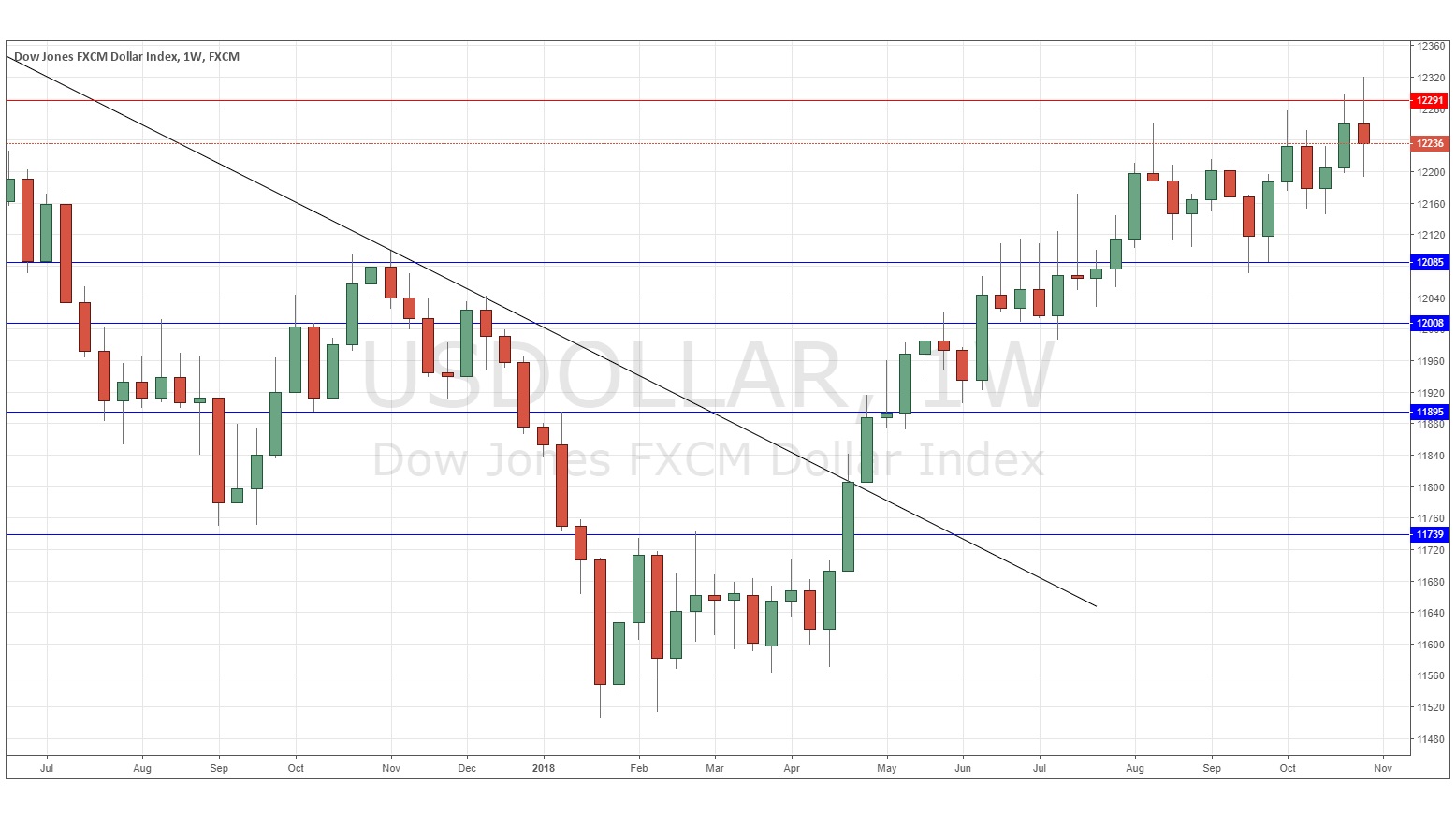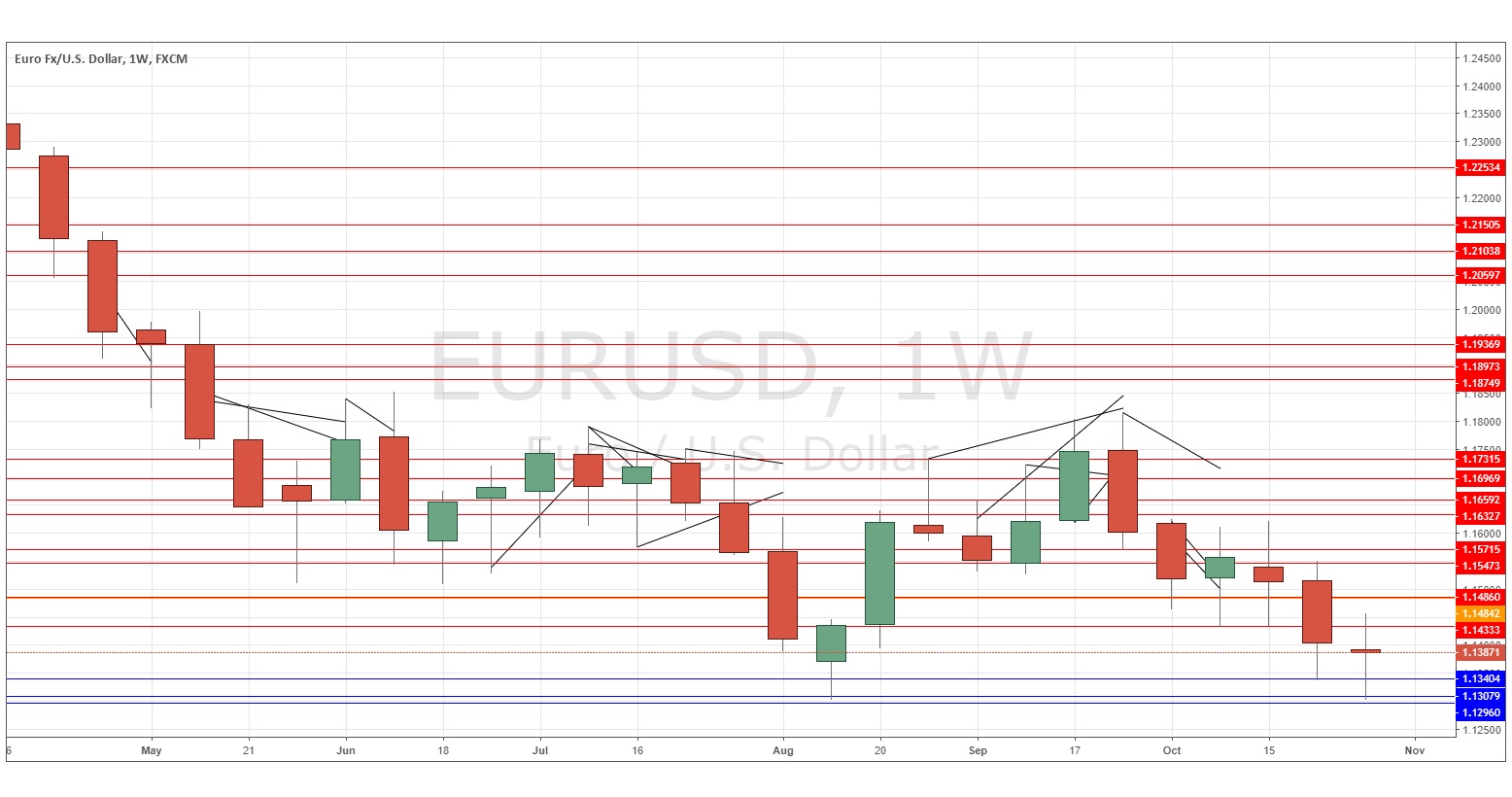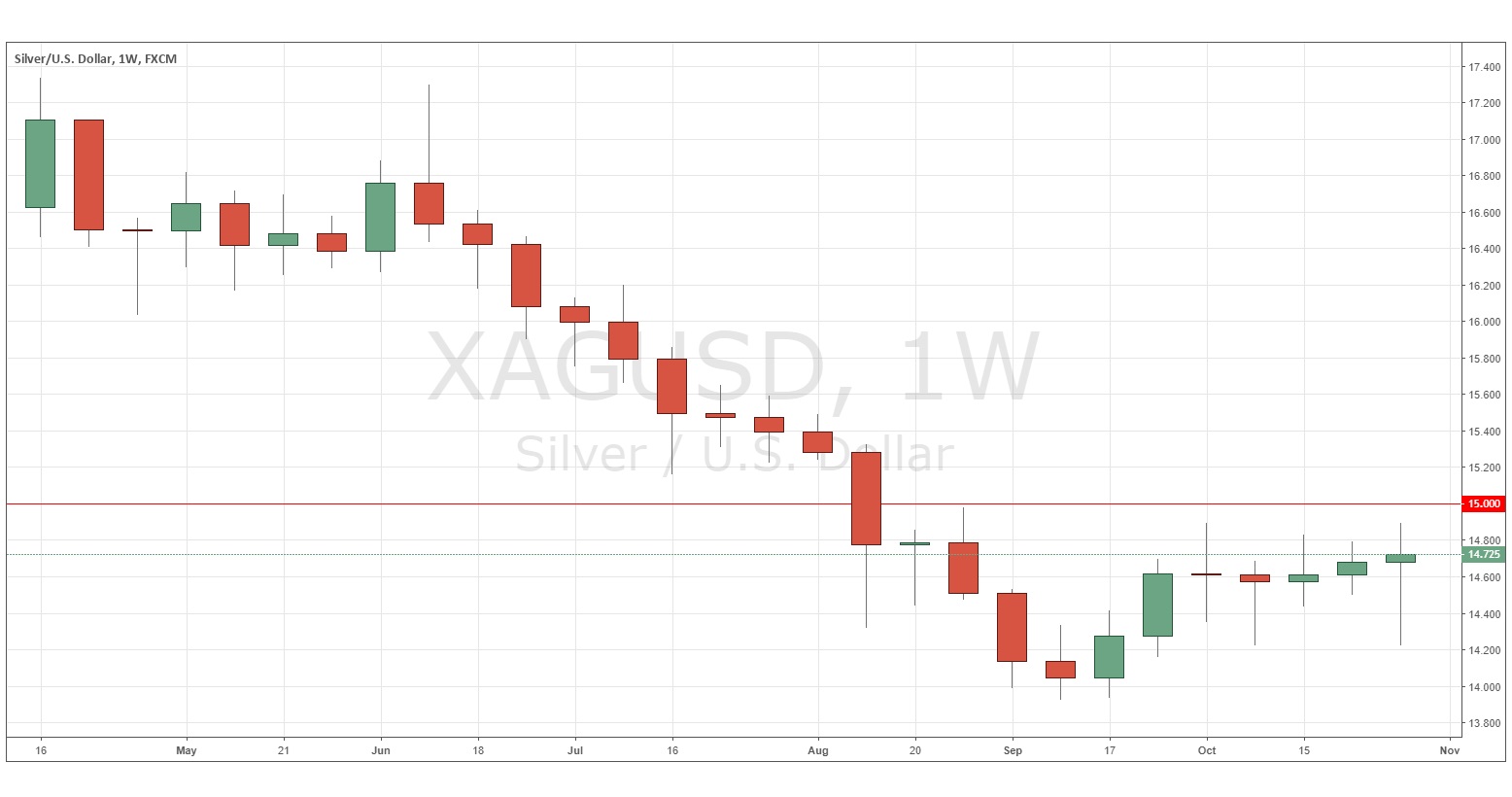The difference between success and failure in Forex trading is very likely to depend upon which currency pairs you choose to trade each week, and not on the exact trading methods you might use to determine trade entries and exits. Each week I am going to analyze fundamentals, sentiment and technical positions in order to determine which currency pairs are most likely to produce the easiest and most profitable trading opportunities over the next week. In some cases it will be trading the trend. In other cases it will be trading support and resistance levels during more ranging markets.
Big Picture 4th November 2018
In my previous piece last week, I forecasted that the best trades would be short of the EUR/USD and short of the S&P 500 Index. The EUR/USD currency pair fell by 0.14% while the S&P 500 Index rose by 1.41%, producing an average loss of 0.64%.
Last week saw a rise in the relative value of the Australian Dollar, and a fall in the relative value of the Japanese Yen.
Last week’s Forex market was dominated by a recovery in risk appetite, with most stock markets moving up somewhat, as well as a stronger than expected U.S. non-farm payrolls number, and news that a financial services Brexit deal appeared to have been agreed. The U.S. Dollar ended the week on a bullish note, while the British Pound spiked up strongly on Thursday.
This week is likely to be dominated by the U.S. FOMC meeting, as well as by central bank input from Australia and New Zealand. There will also be key British GDP data.
Fundamental Analysis & Market Sentiment
Fundamental analysis tends to support the U.S. Dollar, as American economic fundamentals continue to look strong. Sentiment seems to be still in favor of the U.S. Dollar as despite quite strong recent selloffs in the stock market, the economic fundamentals are still seen as strong, although there is perhaps a greater feeling that the continuing rate hikes are going to weigh on growth sooner or later. Fundamentals remain bearish on the Japanese Yen, but this currency can benefit from safe-haven “risk off” money flow and has been benefiting while stock markets continue to sell off.
The week ahead in the market is likely to be dominated by the U.S. Dollar and British Pound, and to a lesser extent the Australian and New Zealand Dollars.
Technical Analysis
U.S. Dollar Index
The weekly price chart below shows that after last week’s bullish candlestick, the price remained mostly unchanged over this week, printing an inconclusive semi-doji candlestick, which also rejected the resistance level at 12291. The price remains within a multi-week consolidation between support and resistance and I have no strong confidence as to short-term direction, although the edge is still technically in line with the long-term bullish trend, which remains intact. Another bullish sign is that we have seen higher prices over each of the past three weeks.
EUR/USD
The weekly chart below may not appear to show much of a trend, but in a very flat and mostly calm Forex market, and despite the relatively low volatility here, this pair is in a downwards trend. Although the weekly chart below shows we have just had a doji candlestick, which is typically indecisive, there is still some bearish momentum. There is still a small edge in favor of short trades, although bears should beware of the long-term double bottom at the lows.
Silver
Precious metals can be especially interesting to trade in a long direction, as they tend to rise steeply on occasion. Spot Silver has been basing bullishly for a few weeks, within a relatively narrow range, and looks as if it is threatening to burst bullishly out of its range. The price is clearly held down by the psychological level at $15, and a daily close above that level could be a nice signal for a long trade.
Conclusion
Bearish on the EUR/USD currency pair, bullish on Silver following a daily close above $15.




